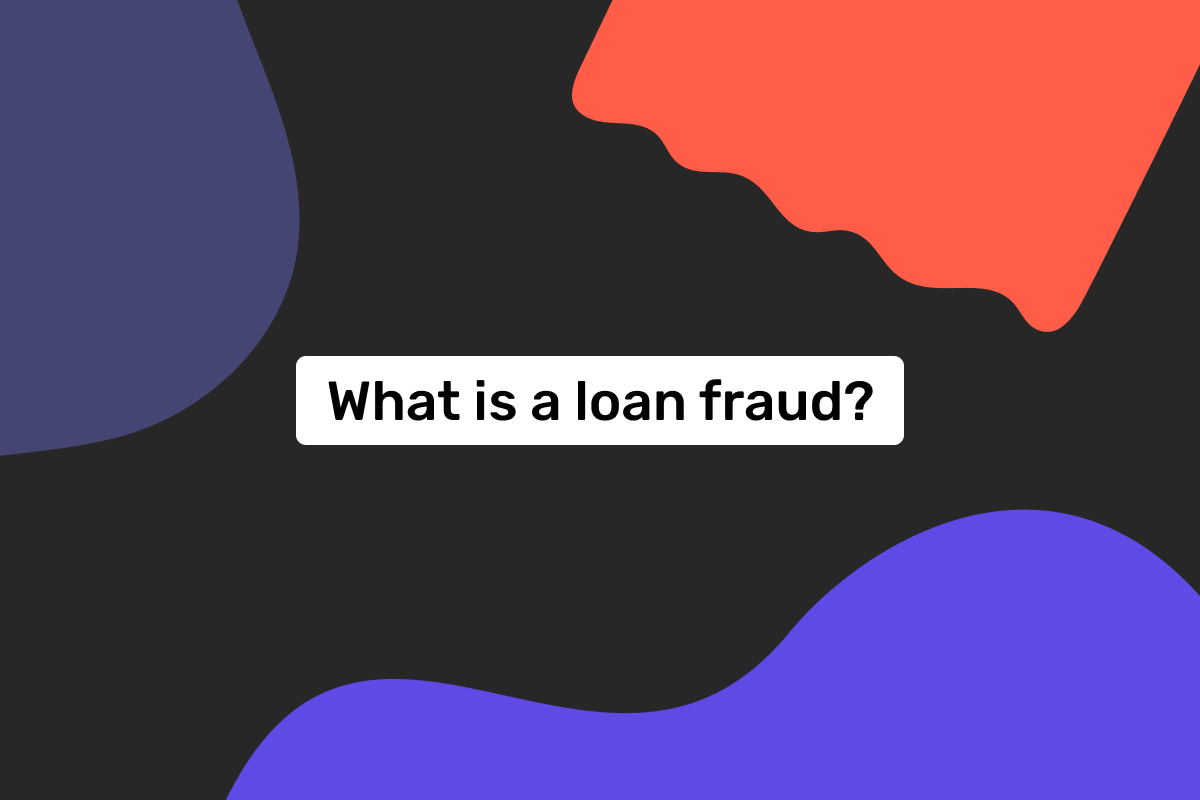Genome Blog / articles / What is loan fraud? When all participants risk being deceived
Mar. 22, 2024
Not all fraud types are created equally, so to speak. Some are decades old, others are very simplistic, and even those that require deeper knowledge of technology. Loan fraud also has some specific characteristics. Its complexity is mainly due to the types and involvement of different parties.
But don’t let us at Genome get ahead of ourselves. Let’s take on the topic one step at a time to better understand the risks of loan fraud and how to prevent it.
Loan fraud: definition of the term
In general terms, loan fraud (sometimes called lending fraud) is a fraudulent activity when deceptive practices are used in situations related to loans and lending. Loan fraud is not easy to describe, as it includes variables that must be addressed. So, let us do just that.
Loan fraud is a two-way street. It means that it can go both ways, for instance:
- An illegitimate company can trick a person into getting a loan;
- A person can lie on their loan application to a real lending firm to get a loan;
- A scammer can steal a person’s identity and use it to obtain a loan.
These are just some of the scenarios that might occur. Individuals and companies must utilize different mechanisms to prevent lending fraud. But before our advice on fraud prevention, let us first look at the common types of loan fraud.
Types of loan fraud
The first thing you must know about loan fraud is that such schemes differ by three types of party involvement.
First-party loan fraud
This scheme is used by people and even legal entities that want to lend money for certain needs but have no grounds to get a loan. Thus, to achieve their goal, such malicious actors provide fraudulent information about themselves or their company in the loan application. In such cases, lending businesses are primary victims, as they will suffer financial and reputational losses.
Unfortunately, the digitization of financial services has played a part in the increase in such cases. The study of SMB lending fraud trends conducted by LexisNexis supports this claim. According to the study, more than half of fraud losses were based on application volume submitted through online or mobile channels. In 2022, 147 small- and medium-sized businesses surveyed received the most applications via these two channels (35% per channel). Also, 68% of fraud cases appeared to be caught after the point of account origination.
Second-party loan fraud
In such cases, an intermediary facilitates the fraudulent act between a person and a loan company. The situations can differ. For instance, a person who wants to lend funds illegitimately can ask for help from a family member with the grounds for the loan.
In many cases, people utilize loan brokers that act as intermediaries. Here, three potential scenarios can occur:
- The loan broker doesn’t recognize their client’s malicious intentions and unintentionally misrepresents the information to the loan firm.
- The loan broker is in collusion with the person who wants to get the loan and lies to the lending business to obtain the loan.
- A scammer poses as a loan broker and profits off of the potential lender.
Third-party loan fraud
This type of fraud occurs when criminals steal someone else’s identity and use it to lend money. Unfortunately, such cases of identity theft pose a threat to unassuming individuals whose information the criminals use. Once they discover their involvement, this fact will cause emotional distress, followed by potential damage to their credit score or financial losses.
Common loan fraud schemes
Now that we’ve covered the basics, let’s review some of the widespread lending scams.
- Payday loan fraud. Scammers lie about their financial circumstances, employment status, or identity on payday loan applications, get funds, and don’t pay them back.
- Income fraud. If a person wants to obtain a larger loan, they may misrepresent information about their income or employment status.
- Identity theft. It is a type of third-party loan fraud – criminals steal someone else’s identity to lend funds.
- Mortgage loan fraud. People falsify information about their income and other details when applying for a mortgage.
- Loan stacking. A fraudster rapidly borrows funds from multiple loan firms and then disappears without paying the money back.
- Equity skimming. In this case, scammers lie about the value of their assets to repay a loan or use funds obtained from one loan to cover payments on another without repaying.
- Advance-fee loan fraud. Fake companies offer loans in exchange for upfront fees but then disappear and don’t pay out funds to people.
How can loan businesses prevent fraud in their line of work?
Lending fraud cases are inevitable, but there are ways loan companies can minimize them:
- Use advanced, industry-tested verification tools to ensure the legitimacy of your clients.
- Request additional documents and double-check the clients’ obligatory documents.
- Track and monitor clients’ transactions and implement tools that will allow the detection of suspicious payments.
- Partner with a financial institution that specializes in providing services to lending firms. It is likely that such payment providers offer anti-fraud solutions that can decrease loan fraud cases.
- Implement strong internal policies for fraud and security-related incidents. Review and revise them regularly.
Tips for people and companies on avoiding identity theft
Identity theft can result in scammers using an individual’s or entity’s data for loan fraud. To avoid it, you can do the following:
- Keep your information private. This tip seems obvious at first, but not all people follow it. Avoid oversharing about yourself or your company on social media, and keep your documents, passwords, credentials, etc. secure.
- Don’t neglect passwords. We cannot stress this enough! Each of your personal and corporate accounts must have unique, strong passwords. Turn on two-factor authentication when available.
- Manage documentation. Shred personal/financial documents you don’t need; don’t keep these online in places that someone else can access.
- Monitor activity. Keep track of all logins into your accounts and check your financial statements for suspicious activity and to prevent account takeovers.
- Be cautious with strangers. Don’t click on links or download anything that comes from emails or phone numbers you don’t know. Only use websites that are properly encrypted. Use a VPN, and don’t log into your accounts when you browse the internet via public Wi-Fi networks.
Last but not least, keep up to date with all the latest news on security and fraud prevention. Genome can help with that! Go to our security page and subscribe to our special newsletter. You will receive exclusive tips and one-pagers on security and fraud prevention!





